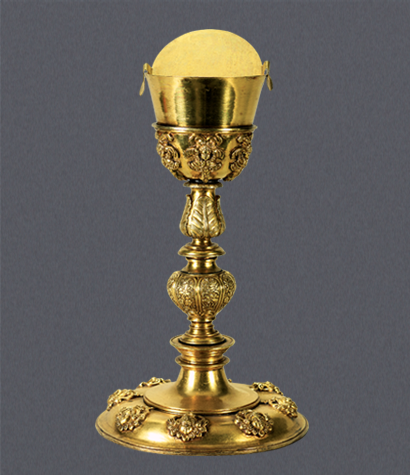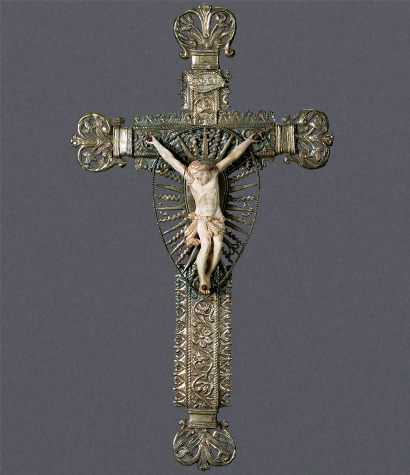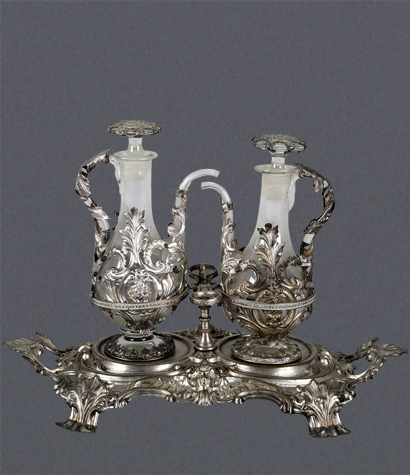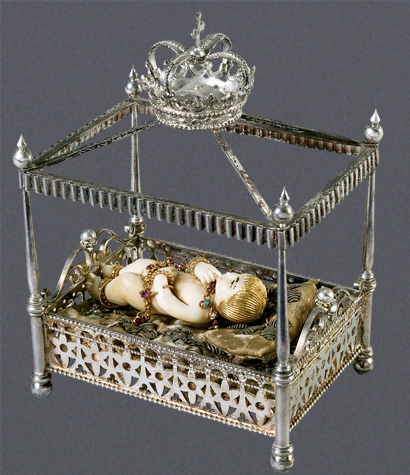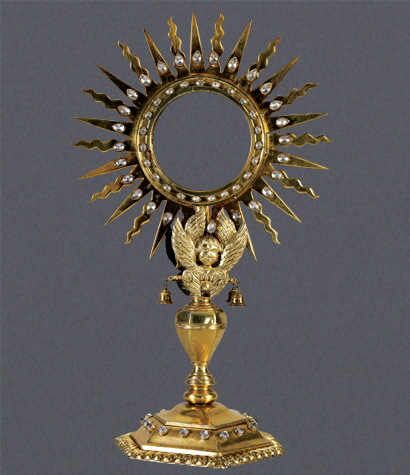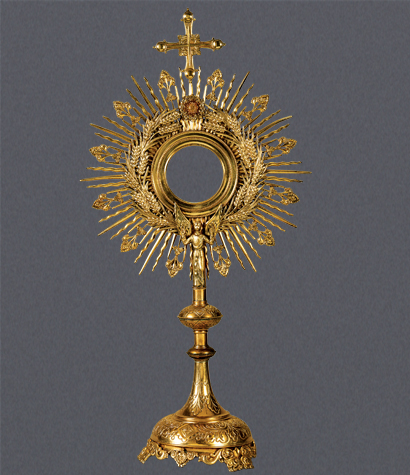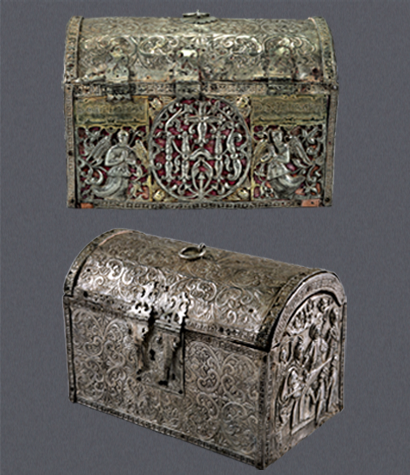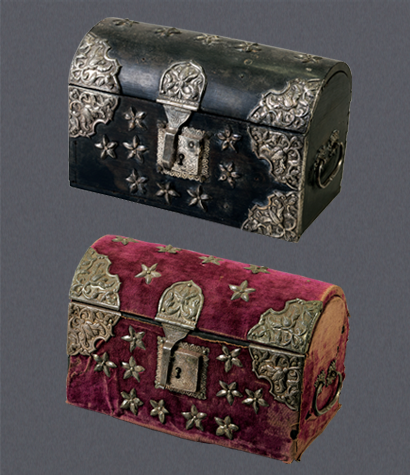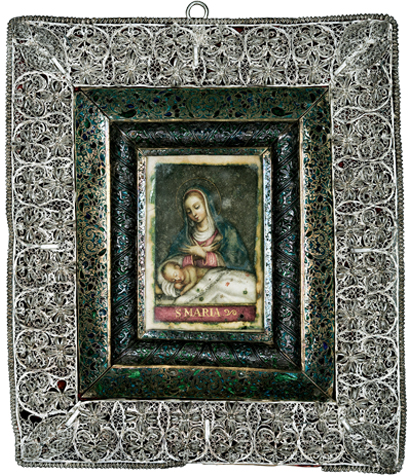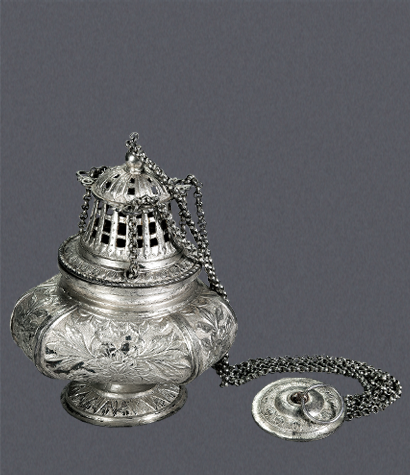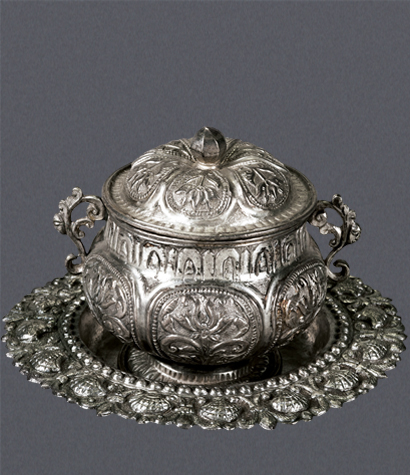
As its name implies, the ablution cup is a small vessel containing water. The priest washes his fingertips in it before touching the consecrated materials during Mass. Used at the altar, the cup is lidded, and accompanied by a plate and a small linen cloth for the drying of hands. Most ablution cups were made of glass or, preferably, silver, considered a nobler material.
When made of silver, the ablution cup is lavishly engraved with symbolic motifs. Here, it is chased with plant and shell motifs, making it an excellent example of late-18th century Indo-Portuguese art. The stylized lotus motif is held in a petal-shaped frame finished in a pearl design, and decorates both lid and cup. The scallop motif found all around the base continues the Late Gothic Portuguese Manueline maritime imagery while implicitly tying the work to its Goan origins. The cup sits on a circular two-sectioned base with a gored pattern all round.
PUBLICATIONS
Museum of Christian Art, Convent of Santa Monica, Goa, India, Calouste Gulbenkian Foundation, Lisbon, 2011.

